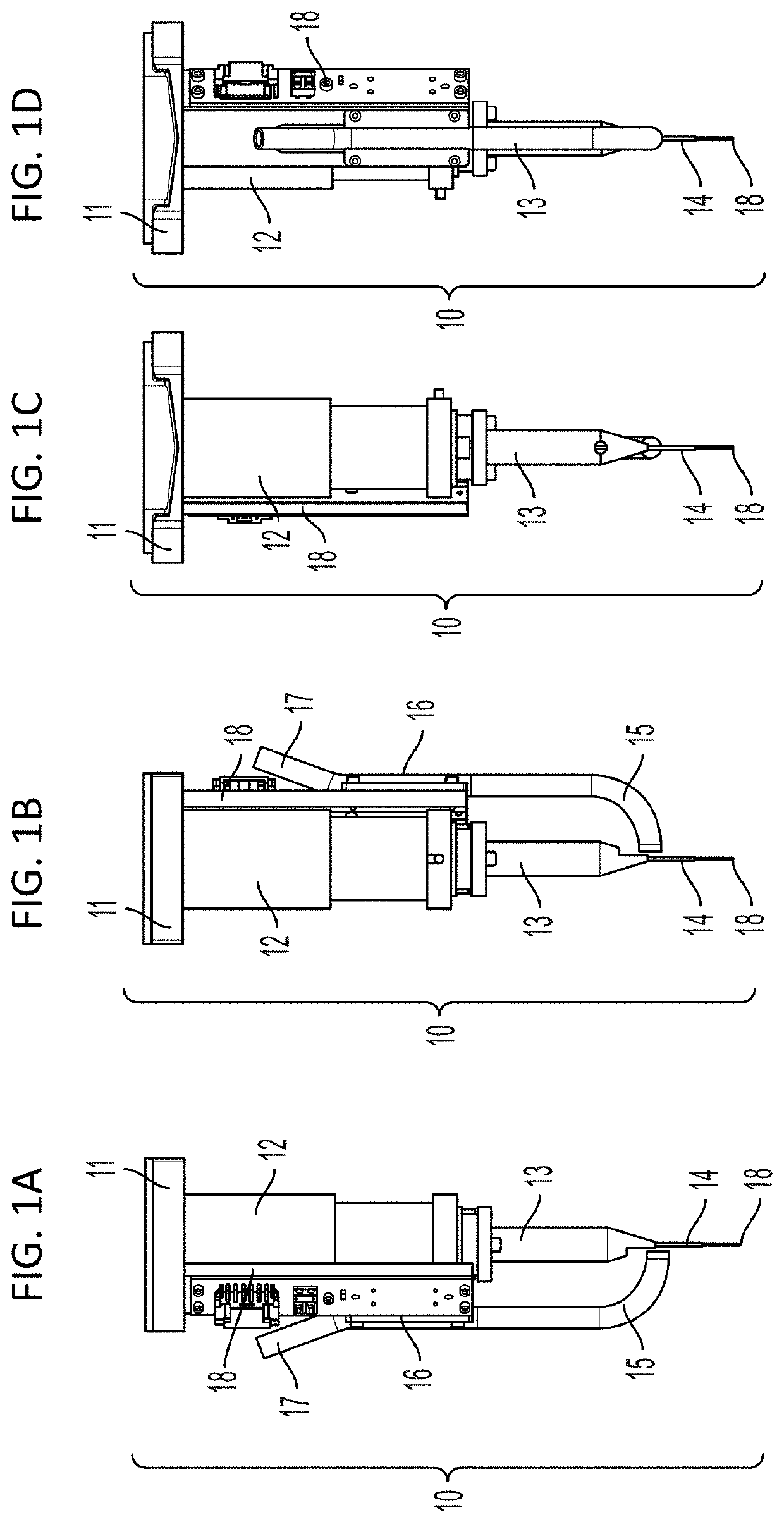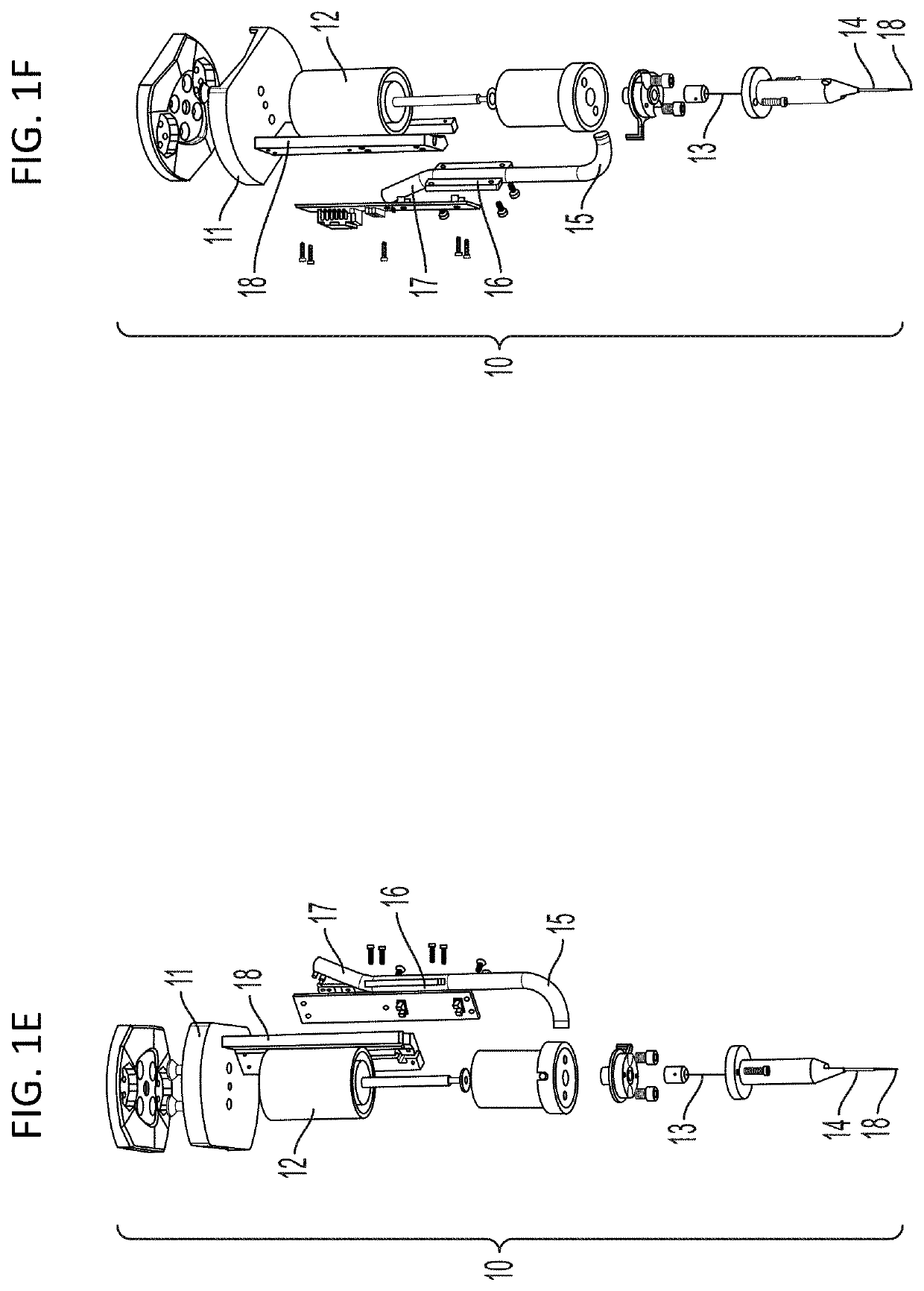Devices and methods for cosmetic skin resurfacing
a skin resurfacing and cosmetic technology, applied in the field of cosmetic skin resurfacing devices and methods, can solve the problems of limiting the applicability of surgery to certain treatment sites, inconvenient, and expensive, and the method is generally less effective than surgical methods
- Summary
- Abstract
- Description
- Claims
- Application Information
AI Technical Summary
Benefits of technology
Problems solved by technology
Method used
Image
Examples
example 1
of Skin Laxity in the Face Using a Hollow Needle with Two Prongs
[0219]An apparatus of the invention may be used to administer treatment to the skin of a subject. Treatment may be performed outside of an operating room environment, thereby minimizing the cost of treatment.
[0220]The apparatus used for treatment of the subject may be any of those described herein. For example, the apparatus may be that shown in any one of FIGS. 16D-16I (e.g., apparatus 163 including actuation unit 151, needle assembly 10, and cover 161). For treatment of skin laxity in the face, a metallic, hollow needle with two prongs each having a bevel angle α of 30 degrees may be selected for application to a treatment area of about 4 mm by about 9 mm. The selected hollow needle may be a 24 gauge needle and may be affixed to the needle assembly of the apparatus at its proximal end (e.g., away from the needle tip). The tip of each prong of the hollow needle may be a sharp point (e.g., sharp point 51 as illustrated ...
example 2
of Skin Laxity in the Face Using a Hollow Needle Having an Edge
[0223]The hollow needle used in Example 1 may be replaced with a hollow needle having an edge. For example, the hollow needle used to treat skin laxity in the face may be a metallic, hollow needle with two prongs each having a bevel angle α of 30 degrees. The hollow needle may be a 24 gauge needle and may be affixed to the needle assembly of the apparatus at its proximal end (e.g., away from the needle tip). The tip of each prong of the hollow needle may be an edge (e.g., edge 52 as illustrated in FIG. 5B). The hollow needle may be configured to penetrate about 0.5 mm to about 2 mm (e.g., about 1 mm) into the skin and to remove an areal fraction of about 0.03 of skin tissue.
example 3
of Skin Laxity in the Face Using a Hollow Needle Having a Flat Tip
[0224]The hollow needle used in Example 1 may be replaced with a hollow needle having a flat tip (e.g., a two dimensional flat tip). For example, the hollow needle used to treat skin laxity in the face may be a metallic, hollow needle with two prongs each having a bevel angle α of 30 degrees. The hollow needle may be a 24 gauge needle and may be affixed to the needle assembly of the apparatus at its proximal end (e.g., away from the needle tip). The tip of each prong of the hollow needle may be a flat tip (e.g., flat tip 53 as illustrated in FIG. 5C). The hollow needle may be configured to penetrate about 0.5 mm to about 2 mm (e.g., about 1 mm) into the skin and to remove an areal fraction of about 0.03 of skin tissue.
PUM
 Login to View More
Login to View More Abstract
Description
Claims
Application Information
 Login to View More
Login to View More - R&D
- Intellectual Property
- Life Sciences
- Materials
- Tech Scout
- Unparalleled Data Quality
- Higher Quality Content
- 60% Fewer Hallucinations
Browse by: Latest US Patents, China's latest patents, Technical Efficacy Thesaurus, Application Domain, Technology Topic, Popular Technical Reports.
© 2025 PatSnap. All rights reserved.Legal|Privacy policy|Modern Slavery Act Transparency Statement|Sitemap|About US| Contact US: help@patsnap.com



